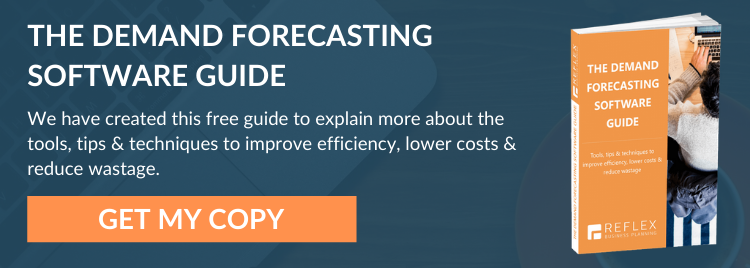One effect of Covid-19 in high street retail and e-commerce has become apparent: a requirement for a transformation in the end-to-end supply chain, combined with a new approach to demand forecasting and planning. For a business to achieve its goals this year, more flexible, integrated solutions are needed.

Traditional demand planning is no longer effective
Traditional demand forecasting is based on historical trends and sales data, with the assumption that next Christmas (for example) is going to look more or less like the last. But in a rapidly changing world, basic data analysis cannot be the only forecasting method. Technological advances mean that forecasting inputs can now draw on a wide range of new sources. As well as using historical data, demand forecasting software now involves AI algorithms and increasing collaboration across multiple external and internal processes to arrive at a more accurate and responsive demand model.
Looking at the bigger picture
Thanks to globalisation and the increasing interconnectivity of supply and market chains, businesses must assess and incorporate observations and data regarding external market forces and drivers that transcend seasonal changes. These decentralised and widely spaced supply chains proved vulnerable during the Covid 19 pandemic, with travel restrictions and regional outbreaks closing off parts of the supply chain with little warning, with a domino effect on other businesses throughout the world. Therefore, it is essential to combine external and internal data sources in market-based forecasting to maximise profits and capabilities. Demand forecasting in 2021 should assume a level of volatility and disruption that most planners would have considered unrealistic just two years ago.
For example, in a brick-and-mortar shop, data such as foot traffic, weather, and seasonal travel helps to paint a daily picture of the factors driving sales at given times of the year. But mining a more comprehensive range of data from social media platforms (including levels of social anxiety, consumer optimism etc) allows you to understand market shifts based on trends, health news and political concerns. Taking traditional external factors together with social media data, a company can gain a broader view of the volumes and product mix they should make available.
Other points to consider
Competitor pricing, manufacturer incentives and distribution are other crucial data points to bear in mind. Using all the available data and widening the range of information sources to include machine learning or AI algorithms allows integrated revenue management solutions, and produces a more accurate forecast picture for effective decision making.
Demand planning: the future is in the details
Adapting demand forecasting and planning to the “new normal” is all about capturing and utilising details and data. In uncertain times, businesses that can access the complete data are in an optimal position for making decisions in a timely and effective way.
With planning, forecasting and stock optimisation all in one place, specialist software from Reflex Planning is designed to be intuitive and user-friendly and is quick and easy to implement. Trusted by leading brands, our Reflex Planning modular software solutions are developed in the UK and offer UK-based support, maintenance, and training
Find out more
To find out more about how we can help you streamline your demand management processes, increase efficiency, minimise errors and increase your profitability, please get in touch with us to book a product demo.

